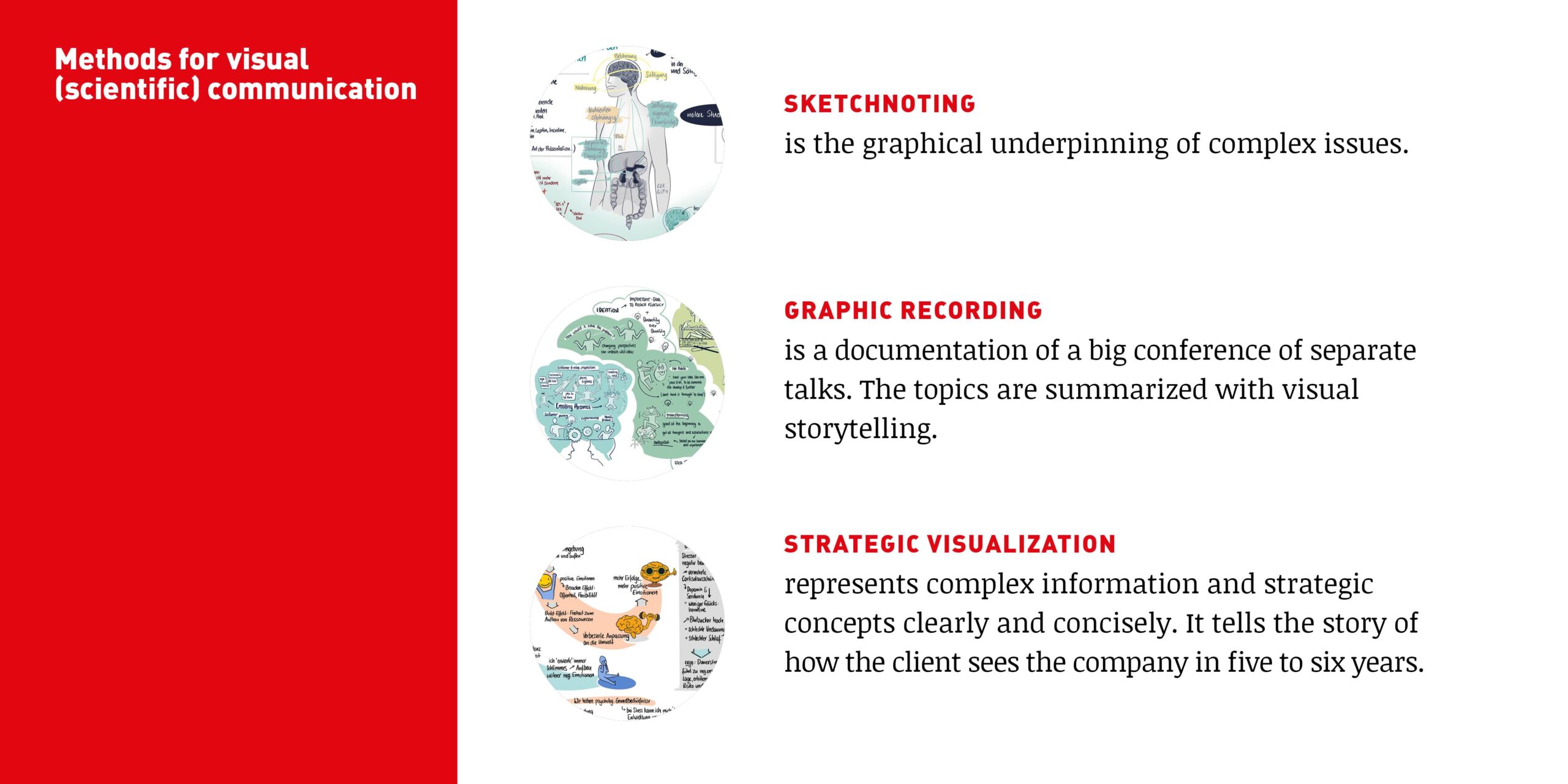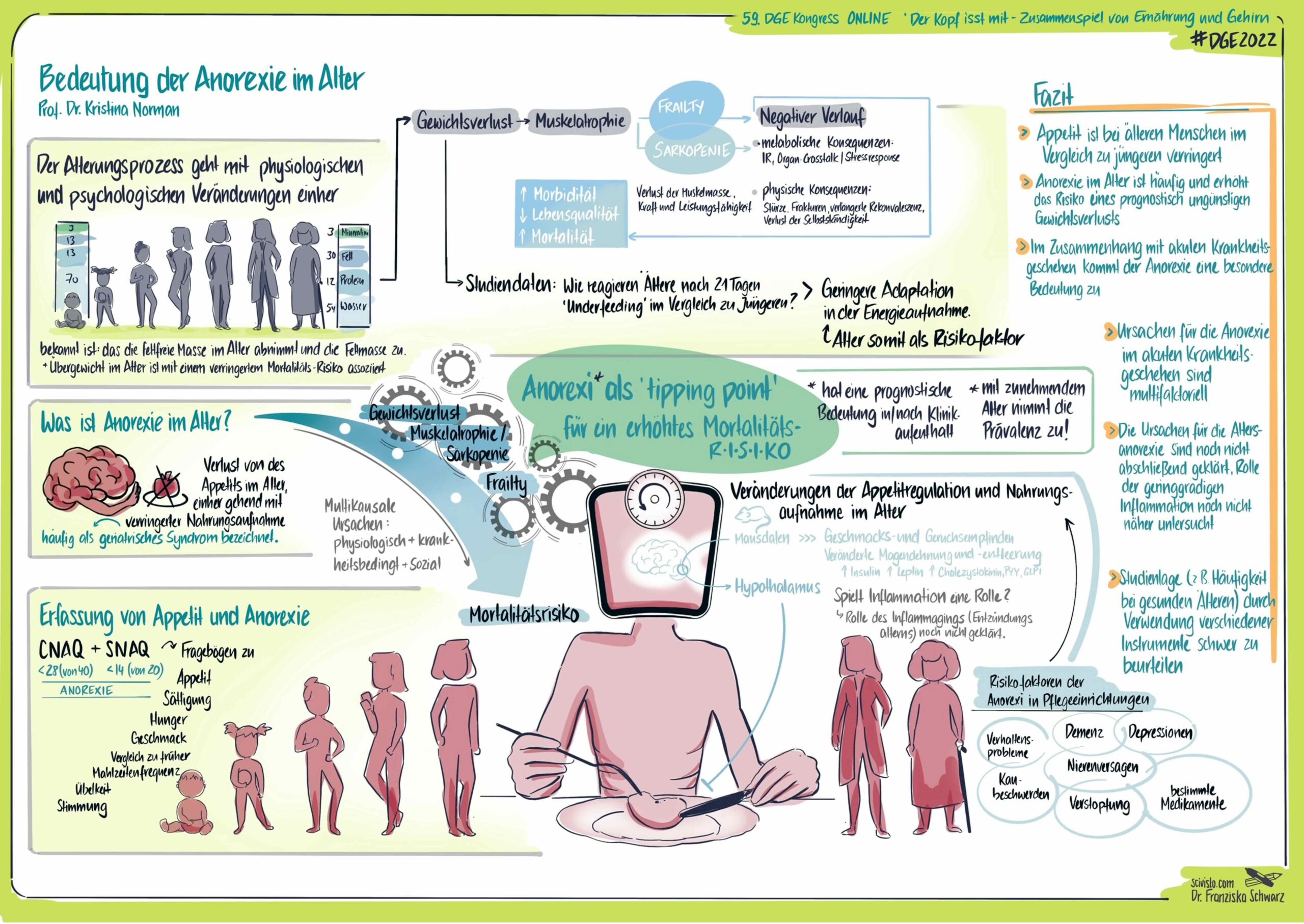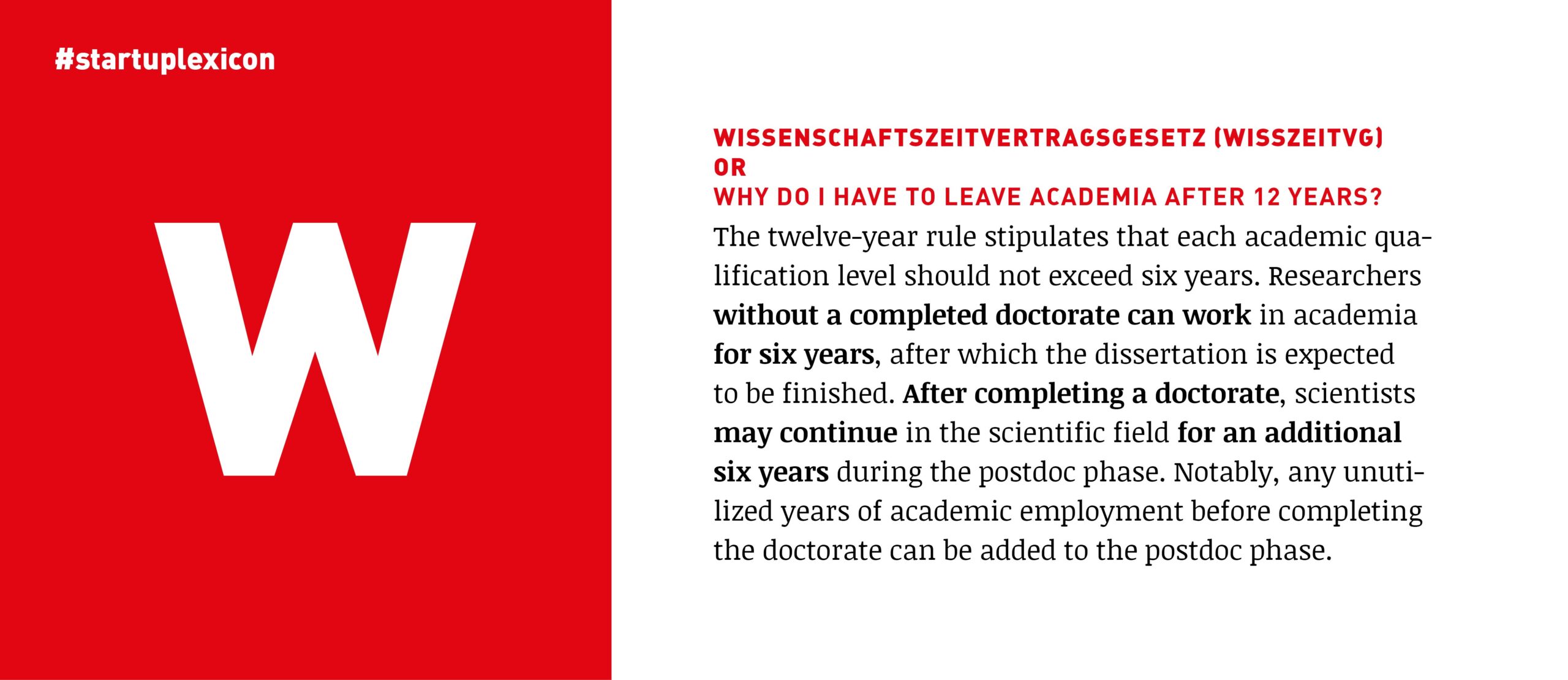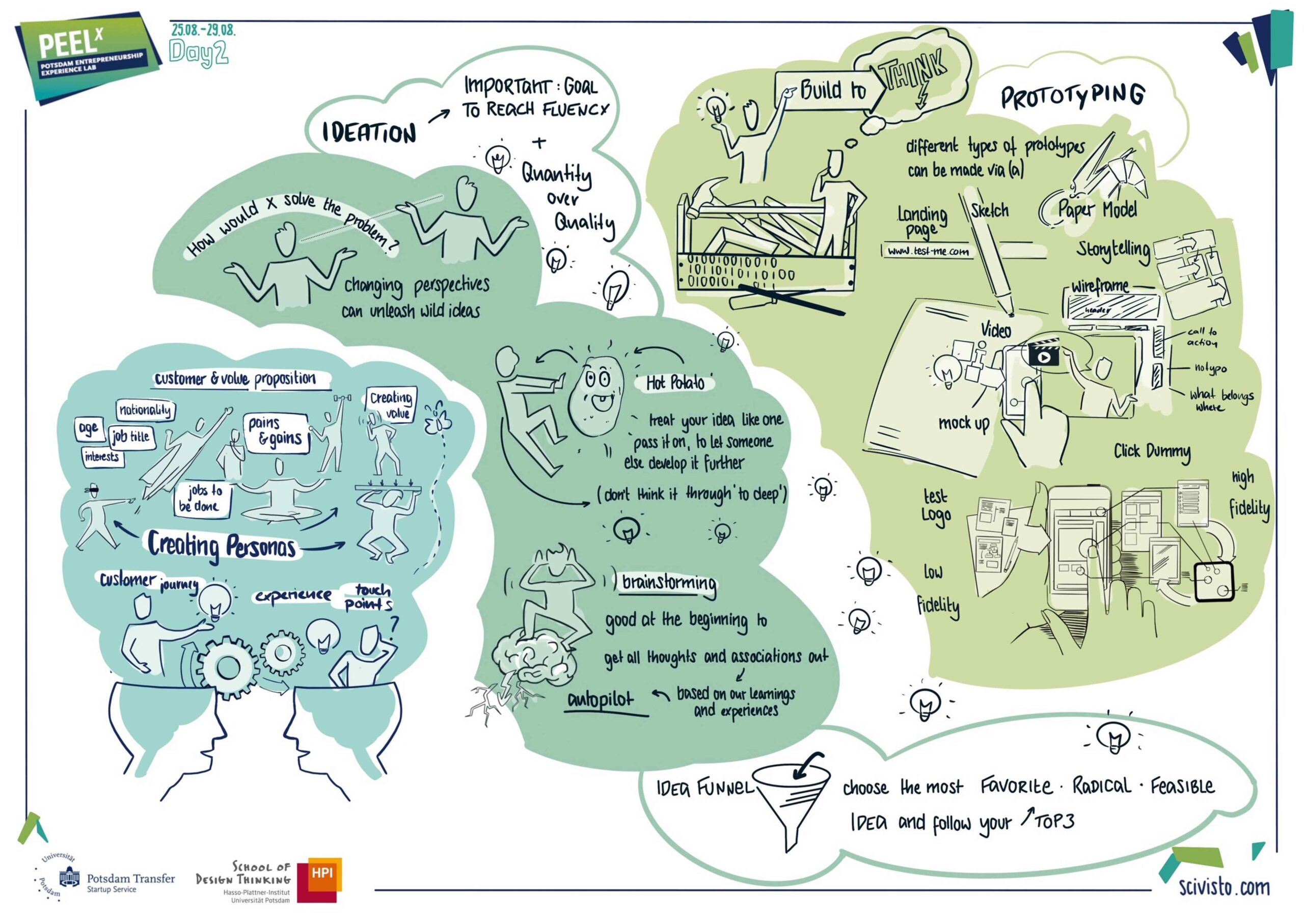
Bridging the Gap Between Science and Communication 
Written by
Franziska W. Schwarz is a scientific communicator with a PhD in nutrition. With her talent for drawing and simplifying, she helps to translate complex topics into easily digestible visual summaries. Explore how this talent has been a constant companion throughout her life and uncover valuable insights for your own research!
How did you stumble upon scientific communication?
Science always fascinated me in school as much as art classes did. Unfortunately, back then, I couldn’t combine these two subjects. After finishing school, I decided to study nutrition. Years later, while doing my PhD at the University of Potsdam, I was expected to participate in lab seminars. One of them was a particularly reading-intensive seminar. I was so overwhelmed with the readings, my notes, and the input from fellow PhD students that I couldn’t help but clean up my notes.
That’s when I stumbled across sketchnoting, which helped me to structure my notes better. After a few weeks, I remembered what my fellow students were discussing. I couldn’t do that before. In a matter of half a year, I knew what everyone was researching, I cleaned up my scientific papers, and my lab book was more fun because there were icons.

That was the point where you found your determination career-wise.
Definitely. At the very beginning of this journey, I attended a scientific convention where people tried to buy my lab book. I was confused about why people would give me money for my notes. I reached out to a visual thinking group in Berlin. At the end of 2016, I went to my first meet-up with that group – and what can I say? I finally felt like I was at the right place. I learned that earning money with graphic recordings would be a very unusual career change but necessary for me: There was a lack of visual practitioners with a scientific understanding. And here I was, being ready to step in!
When did you decide to become self-employed?
When I decided to start working as a graphic recorder, I was still permitted to get funding from the federal government via the University of Potsdam transfer service. They were glad to help and took me in for a year, the last year in my PhD position. By then, it was the right decision to take the funds and become self-employed.

How did this career change feel for you?
I hadn’t planned my scientific career quite well, which was a mistake. I had my publications but lost interest in the area of research. Furthermore, I saw myself teaching at a university, so I applied for teaching positions. I had to learn the hard way that I was too far up that career path to go teaching with my long-lasting PhD. My remaining option was to go into industry – but again, everybody told me that my PhD took too long or I wasn’t trained in the needed methods. In parallel to experiencing this, I learned how to find projects as a graphic communicator, do workshops, and become self-employed. This was a much more appreciative experience, which showed me that it was the right time to jump into the other lane.
You learned how to go with the flow.
I knew the change was coming due to the law that you must leave the university system after 12 years. I was lucky to stay here in the geographic area and find a job that I like and is still connected to science. I told myself I could always change the position or do it differently. For me, it has been more about the path, not the destination. I go with the flow and see who I can meet and what I can gain or learn from the experience.

How does a typical day on the job look for you?
I do some preparation before entering the job. My first step is getting enough knowledge to understand the speakers’ topics on the presentation day. Based on that research, I also prepare ideas for visuals and icons for the event. At the event, I take on a supporting and passive role. Therefore, I like to refrain from being introduced. I work in the background until my work is done, and the audience sees the benefit of my recording – rather than explaining for a long time what I will do to the participants. Presenting my work later is a better way of explaining what I do.
What have been the most rewarding aspects of your work in terms of both helping clients and advancing the field of scientific communication?
I had wonderful projects where people told me in the end that they understood something better or that my graphic recordings were the key to their understanding. The first big project I had was with the University of Potsdam itself. Their vision was to create a little booklet with 80 questions for children on how they imagined science and how the world works. To this day, I get feedback that kids love that booklet! The parents read it to their children at events, and both gain a new understanding of many questions. It is most rewarding for me when those people come up to me and tell me I found the right image fit, which made them understand the topic better.

Have you run into any issues regarding clients or work?
In the beginning, most of my struggles were with scientists, primarily elderly professors. They kept telling me that due to my drawings, the scientific aspect was not conveyed enough, and they were not getting the benefit of my work. Doing something artsy, something funny, something that looks nice, was not always welcome in academia. They also questioned why I gave up my academic career path to do something like this. There was a lot of judgment. Thankfully, as in every institution, the demographics changed after some time. The new, younger staff finally gave me the recognition I wanted.
Do you have any tips for people who want to start in graphic recording or want to leave academia for self-employment?
My tip is to build a network, exchange ideas, and create a space for reflection and further development. When someone made a fool of me at an event, I kept telling myself: No matter what anyone criticises at that moment, I’m going to get my money anyway. And I know I’m doing a good job.
What would be your number one tip for aspiring founders?
First, figure out what you want to do. If you need more clarification, talk to people about how they perceive your idea. People will automatically offer help and “yes-and” to your idea whenever you talk about your idea. Don’t overthink it; instead, overtalk it.
When you speak out all your ideas, somebody else is receiving them and weighing them. Your thoughts are taking shape when they’re out of your head. And that helps in almost every situation.
You’re a one-woman show. How do you ensure you have that helpful contact with people?
I ensured contact with a huge and well-structured network with most graphic reporters from all over Germany. Being self-employed brings much freedom, but it has many limits structure-wise. So, we are willing to change or share jobs with others to find the right fit for the client, the suitable graphic recorder, and the product. Many of us join an agency that’s helping to find jobs. I’m even joining mine full-time now, which I’m excited about! So, whenever I need another person’s opinion, input, or help, I can easily reach out to them.
What happens next?
Check out our event calendar for upcoming workshops. Stay tuned for more updates, opportunities, and success stories!
Illustration: Ana Briceño
Editor, Design & Art Direction: Bianca Cramer






